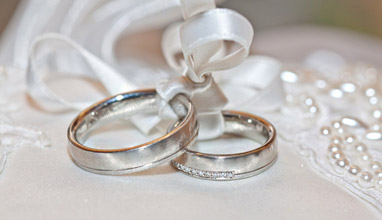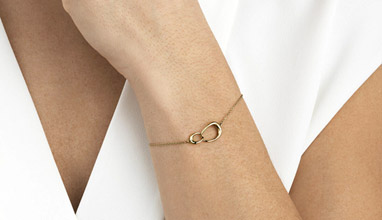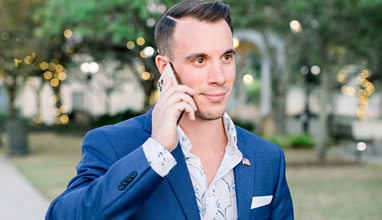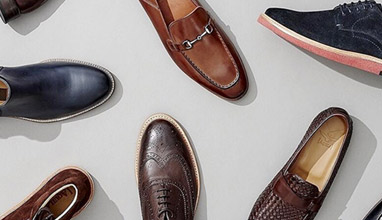English shoes by George Cleverley
George Cleverley is a unique shoe company with an impressive history. Headed by Mr. George Glasgow Snr (Co-owner & Chairman) & Mr. George Glasgow Jr (Co-owner & CEO), it has become world-renowned for handmade shoes & leather goods. Between George Snr & George Jr they attend every trunk show around the world to ensure they meet with clients and keep a personal relationship with their customers.
The George Cleverley name goes back to the late 1800s, and since that time the craft of bespoke shoemaking has hardly changed. The following is a brief summary of the steps involved in the making of a fine pair of handmade shoes. There are basically five stages involved: measuring and last making, pattern cutting and clicking, closing, making, and finishing.
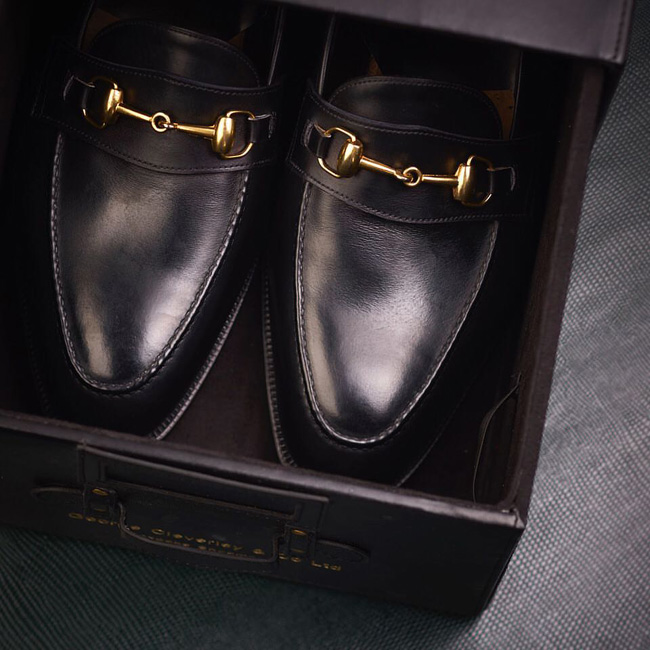
The process of making the bespoke shoes:
The crucial first stage in the making of bespoke shoes at George Cleverley is the measuring of the client's foot, the noting of peculiarities in the foot, and the transposing of the measures and notes into a wooden model of the foot, called the “last.” Given the importance of these first measures, it is highly desirable that the craftsman measuring the foot also makes the last, for he can best understand the requirements of shaping the last. Our approach to bespoke work is that the fewer people between the customer and the craftsman, the better.
Measuring starts by tracing around the foot and noting any peculiarities such as corns, fallen arches, prominent bones, etc. Measurements are then taken of the widest part of the foot (i.e. from the big toe joint to the little toe), from the bottom of the instep to the top of the instep, and from the top of the instep to around the bottom of the heel.
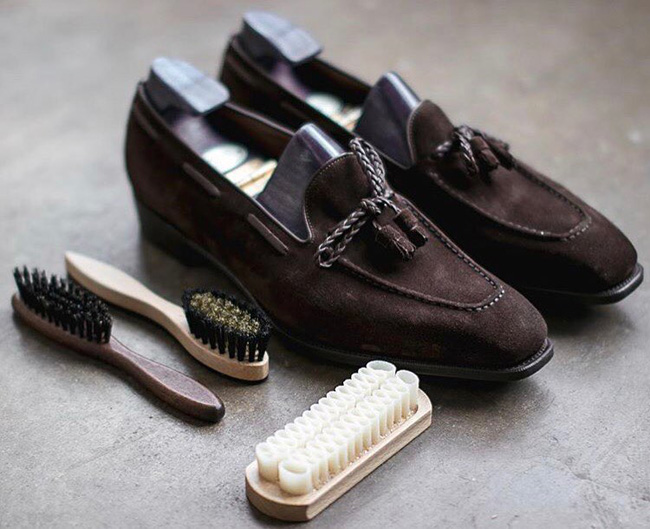
With these measurements, the last maker will then use his expertise to begin fashioning a wooden model of the client's foot. This model is known as the "last". The last starts out as a block of wood and is gradually shaped to the required form by filing with a rasp and whittling with a special knife. A fine rasp and sandpaper are then used to complete the model. The key ability for the last maker is his ability to see a shape in his mind's eye and transpose it to the wooden block.
The cutter then takes over the next stage having been supplied with the measurements and the finished wooden last. The cutter's first job is to make a paper pattern for the style of shoe required. The pattern consists of various pieces, vamp, cap, tongue, quarters and from these various pieces of paper pattern are cut the pieces leather which go to make up the upper.
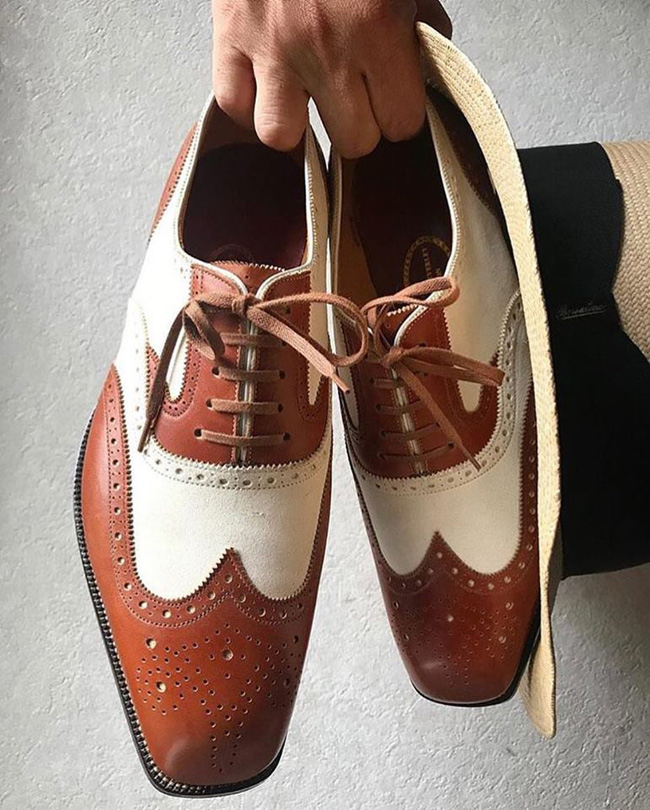
Like the last maker, the cutter is a highly skilled individual who has the ability to design a shoe on paper and convert that design into the beginnings of a bespoke shoe. One of the cutter's most important and skilled jobs is his ability to use appropriate leathers, and to judge their weights, pliability, and quality. It is the cutter who will be responsible for buying the leather to be used in the making of the bespoke shoes.
The cutter then gives the last, patterns, and cut leather to the closer, who stitches the various pieces together to form the finished uppers. At this stage the closer will include linings and the various trimmings such as broguing, binding, elastics, lace holes, etc. Having fit the various pieces together, the closer then pulls the finished upper over the last to ensure that it conforms to the required shape. The upper is then tacked into place. At this stage in the process, a new customer (whose last is being used for the first time), would be invited to attend a preliminary fitting to check that the last and fit are correct. If necessary, any slight adjustments can then be made to the last.

The heel stiffeners and shapes the insole to the bottom of the last, having first soaked the bottom leather to make it mellow. This is moulded to the bottom of the last, and the upper is drawn taut and sewn to the welt. The welt holds the upper to the sole. Tensions have to be even throughout the shoe until the upper fits the wooden last like a glove. The maker then stitches the bottom sole to the welt using a precise number of stitches per inch; the appropriate number of stitches depends on the weight of the leather being used. Between the inner and outer soles, the maker includes a layer of tarry felt to eliminate squeaks in the shoe.
Later the maker adds the heel, which is built up piece by piece with rivets. The bottom of the shoe is then edge-trimmed to provide the finished look. The finish to the bottom of the shoe is very important and demands a high degree of skill. The finish will greatly affect the overall appearance and styling of the shoe.
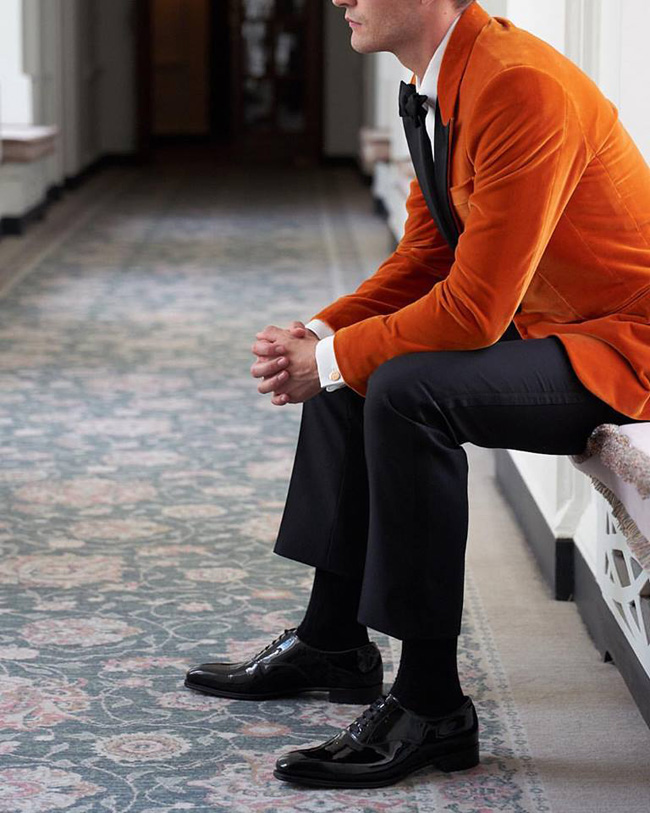
The maker then gives the completed shoe to the finisher, who draws the last from the shoe, rubs out small imperfections inside the shoe, and fits the seatsocks. Using brushes, cloths, and polish mixed with water, the finisher then transforms the shoe, bringing it up to a deep glossy finish. A good experienced finisher can greatly enhance the finish and appearance of a shoe. Thus, his contribution is just as important as that of his colleagues.
At George Cleverely, Mr. John Carnera & Mr. Adam Law control the bespoke shoe craftsmen and work is returned to them at all stages for their approval before it is passed to the next craftsman. Since no two craftsmen will produce identical work, Mr. Carnera & Mr. Adam Law ensure that each customer's orders are handled by the same craftsman each time, thus providing a continuity for the customer. In this way and using the skills of five craftsmen, a pair of handmade bespoke shoes are completed to the highest standards and to a customers specifications.
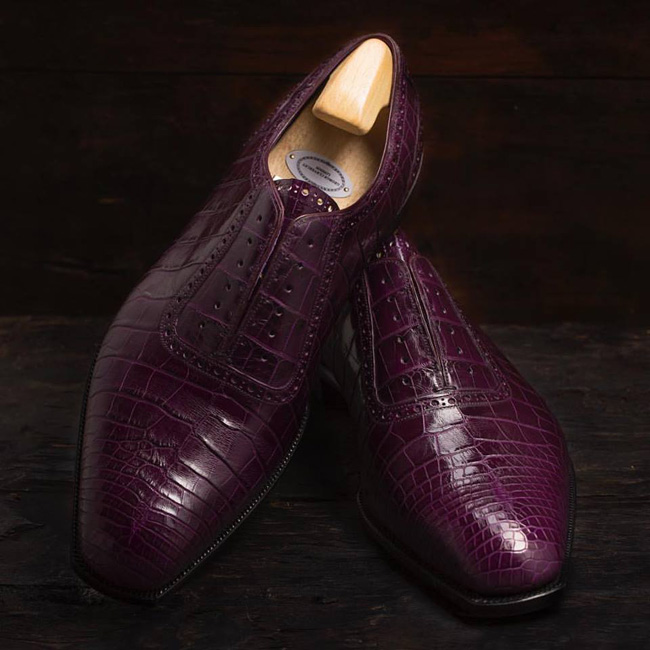
To achieve a professional polish every time, it is important to start properly. One must always polish with the trees in and brush the shoes thoroughly, removing any dirt or dust. Ideally, start the day before you require the shoes.
Photos and information: www.georgecleverley.com
Hits: 7292 | Leave a comment
Tags:George Cleverley, England, UK, shoes, bespoke shoes, men's shoes, craftsmanship, heel, pattern, leather, maker, polish, care







